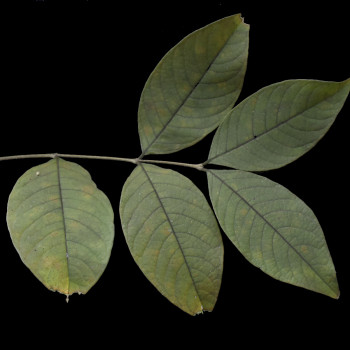Danthappala

Scientific Name :
Wrightia tinctoria (Roxb.) R. Br.
Synonym(s) :
Nerium tinctorium Roxb.
Local/Common name(s) :
Danthappala, Thattan-chavana
Family :
Apocynaceae
Habit :
Tree
Flowering/Fruiting Time :
February-November
Habitat :
Moist and dry deciduous forests, also in the plains
Endemic :
No
Status (IUCN) :
Distribution :
India, Myanmar and Timor
Nativity :
Indigenous
Uses :
Medicine
Description (Morphology) :
Deciduous trees; upto 15 m; bark 8-10 mm thick, grey, smooth; outer layer thin, inner layer thick, brittle, creamy; latex milky white. Leaves simple, opposite, distichous, 3.5-11 x 2-4 cm, oblong-lanceolate or elliptic-ovate, apex acuminate or caudate acuminate, base acute, margin entire, glabrous, glaucous beneath, chartaceous; petiole 2-5 mm long, stout, glabrous; lateral nerves 5-10 pairs, slender, arched, pinnate, prominent, intercostae reticulate. Flower bisexual, white, scented, in terminal cymes appearing along with new leaves; pedicel 1.5 mm long, bracts 2, minute. Calyx lobes 5, with membranous margin, 2 mm, ovate, obtuse, ciliate, glandular inside. Corolla salver shaped, lobes 5, broad lobes 12 x 5 mm, oblong, obtuse, throat with 1-2 series of erect, fimbriate corona scales, tube 1.5-2 mm. Stamens 5, inserted on the mouth of the tube, anthers sagitate, spurred at base, conniving and adhering to the stigma; disc absent. Carpels 2, free; ovules many; style filiform, stigma ovoid, usually with a toothed basal ring. Fruit of 2 follicular mericarps, 15-45 cm long, slender, smooth, green, cylindric, cohering at the tip; seed 16 mm long, black, commate at one end.



